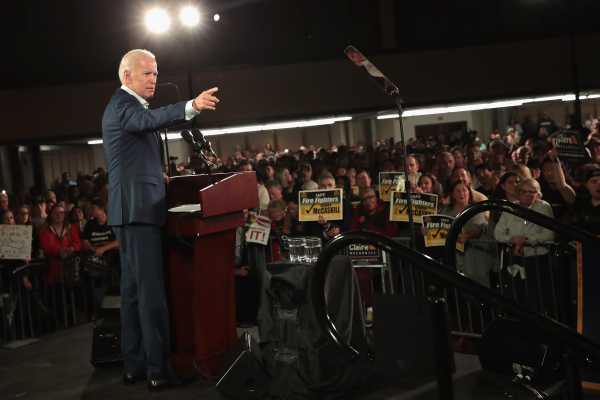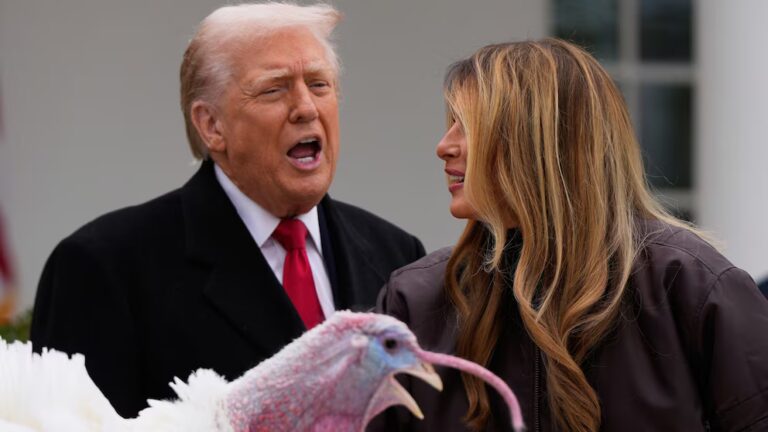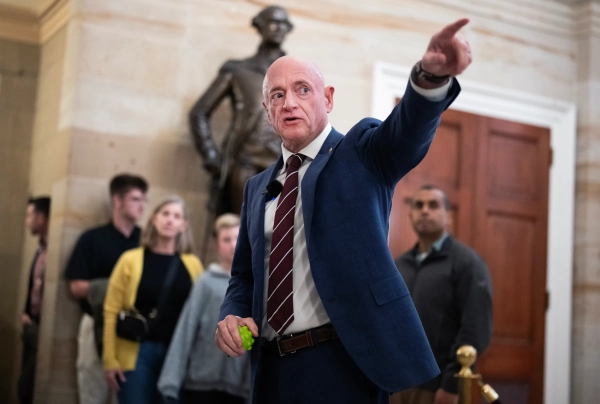
Joe Biden has ideas.
America’s best-liked former vice president and current Democratic 2020 primary poll leader has a public image dominated by the Onion’s parody Biden and a vague sense of him as the lovable “Uncle Joe” in a mostly youthful Obama White House. To the extent that he’s known for anything specific, it’s gaffes and quasi-gaffes like telling a hot mic that passage of the Affordable Care Act was a “big fucking deal.”
Critics, of course, focus on aspects of his long-ago record — the Clarence Thomas Supreme Court confirmation hearings, the War on Drugs, the non-metaphorical war in Iraq — that may take the shine off the current front-runner once his opponents stop being polite and start getting real. (There’s also the issue of whether Biden’s at-times questionable behavior with women will stand up to scrutiny in the #MeToo era.)
The biggest oddity about Biden: Despite his near-universal name-recognition and consistent poll lead, he mostly hasn’t been taken seriously as a player in the policy arguments that have roiled the Democratic Party over the past three years.
That’s a mistake. As Biden has tiptoed toward a 2020 run, he’s begun to outline a policy agenda that — while in some ways less dramatic than other 2020 contenders — is an important glimpse at what a Democratic agenda laser-focused on the working class could look like. After years of intra-party dialogue polarized between Sen. Bernie Sanders’s (I-VT) brand of social democracy and the newfangled form of hyper-woke politics that Hillary Clinton used to beat him in a primary, Biden offers true back-to-basics economic populism.
It’s an agenda that’s progressive and could be genuinely transformative for low-wage workers but also cautious in key respects — focused on workers and students rather than the poorest of the poor, and careful to avoid any hint of middle-class tax hikes or racial divisiveness. It’s less about expensive new expansions of the welfare state than shifting the underlying rules of the economic game to take the government’s thumb off the bosses’ side of the scale and put it on the side of workers.
Politically, it’s an updated version of a formula Democrats used to routinely rely on for general election campaigns (reminiscent of Obama in 2008 or Biden’s unsuccessful run in 1988; his 2008 bid was more focused on foreign policy). Many seem to have set the formula aside as incompatible with the current views of the party base, which is seen as demanding either a full pitch for social democracy, an explicit focus on questions of racial and gender identity, or both. For now, though, the base likes Biden quite a lot, so it’s worth paying attention to what he’s saying.
Joe Biden’s agenda for the middle class
With most 2020 Democratic contenders hailing from Capitol Hill, which is perennially swarmed with reporters, Biden’s entries into the Ideas Primary have gone largely unnoticed despite his high name-ID.
They can be found, however, at a little digital publication he launched called Biden Forum: A Conversation About the Future of the Middle Class that’s housed at the Biden Foundation and run by Ben Harris, a Northwestern University professor and veteran DC policy wonk who served as Biden’s top economic advisor during Obama’s second term. Biden himself gave his own voice to these ideas during two major policy speeches he delivered over the course of 2018, one at the Brookings Institution and the other at Northwestern’s Kellog School of Management.
Across those speeches a number of main ideas emerge:
- Free college: Biden endorsed this back in 2015 when he was still vice president. The idea neither reflected Obama’s policy proposals nor the mainstream thinking in the Democratic Party, but he consistently highlights it when he talks these days. Biden’s rhetoric on this score moves seamlessly between leftists’ love of big universal programs and moderates’ belief in education as the central engine of economic justice, elegantly blending two strands of progressive thought.
- Middle-class tax reform: Biden identifies a tax code that is excessively friendly to investors rather than workers as a central problem and calls for higher taxes on rich business owners’ passive income in order to finance things like a tripling of the Child Tax Credit and other benefits for middle class working people.
- Regional inequality: When listing his five ideas to strengthen the middle class, Biden made tackling regional inequality one of the ideas. But in his speech on tackling regional inequality, Biden mostly just referenced the other four ideas from the five ideas speech. Still, he seems quite taken with the factoid that 75 percent of venture capital flows to just four cities. The point is that Biden seeks to identify himself emotionally and intellectually with parts of the country that feel they have been “left behind” rather than with America’s most booming cities.
- Power for workers: This is the area where Biden’s thinking is most distinctive. He calls for “laws that allow labor unions to flourish and fight for basic worker protections” but also for a suite of new kinds of protections that operate outside the scope of traditional union-focused labor law. Biden wants a ban on non-compete agreements, a suite of measures to ensure that workers can discuss their pay without fear of retaliation, and stronger measures against wage theft. Separately, Biden has been stumping for a $15/hour minimum wage since 2015, when the Obama White House’s official position was $12.
A few key themes hold these ideas together. One is that they all specifically address the economic needs of working people. It’s not welfare state expansion, and it’s not narrowly targeted at the absolute neediest people. Relatedly, while this program is fairly ambitious, its budgetary cost is relatively modest and could be easily financed under the rubric of taxing the rich, rather than asking voters to accept a European-style tradeoff in which middle-class taxes are higher but social services are dramatically more generous. In part, however, that’s because he’s ducking a few key topics.
Biden’s big missing pieces
Obviously what we’re not hearing about here are Biden’s views on the critical topics of health care and climate change.
When denouncing Republican efforts to repeal the Affordable Care Act last year, he wrote that “when the ACA became law and healthcare coverage was extended to millions of people, it meant we had finally decided, as a nation, that healthcare is a right for all and not a privilege for the few.”
That was certainly the aspiration of the ACA, but a series of hiccups — starting with a Supreme Court decision that curtailed Medicaid expansion and continuing through to congressional repeal of the individual mandate and Trump administration sabotage of open enrollment — has meant that it still doesn’t describe the reality of the American health care system. There are currently more than a half-dozen major left-of-center health care plans floating around, and a Biden presidential campaign would likely want to either pick one of them up or release its own.
Similarly, Biden’s commitment to the climate change issue can’t really be doubted — he introduced Congress’s first-ever climate bill way back in 1986 — and likens climate skepticism to “denying gravity.” But he hasn’t really weighed in in a distinctive way on the subject.
These lacunae are, however, broadly consistent with Biden’s overall strategic approach at this point. He’s acting like a more-or-less generic Democrat, focused on honing a general election message laser-targeted at working-class voters who backed Obama in 2012 but either stayed home, flipped to Trump, or voted third party in 2016.
Biden wants workers to know he’s really into them
In some ways, the most distinctive aspect of Biden’s current political message is also the fuzziest — something you can think of as a national call for redistribution of respect and social esteem.
He concluded his Brookings speech on five ideas to boost the middle class with a riff that wasn’t really policy at all, saying, “I applaud investors, but do I think they are greater job creators than the people who do the work in a company? No. I don’t.”
That’s a bit related to his specific tax reform ideas, but he went further from that policy hook:
This brand of feelings-first politics drives ideologues and technocrats bananas, but corresponds to how most people think about politics and political leadership — in terms of group identity and affiliation. Biden is asking Americans to think of themselves based on occupational categories, and to think of himself as a champion of front-line workers. There’s a policy element to that in terms of both taxes and labor market regulation, but it’s a deeper and less concrete pitch than that.
Concurrently, Biden talks about race in a way that is at least a little out of step with recent Democratic Party messaging, if by no means unique.
Biden’s pitch — economic justice creates racial inclusion
Post-LBJ Democrats have tended to champion race-neutral economic policies that, because African Americans and Latinos are disproportionately low-income and rich people are disproportionately white, have the effect of narrowing racial gaps.
Opponents of such policies have often tried to cast them in racialized terms, to present themselves as the champions of the white majority rather than of the economically privileged minority. But somewhat befuddled by Bernie Sanders’ far-left economic pitch gaining traction, Hillary Clinton’s campaign turned to the argument that policies that are facially neutral on race are insufficient and that Democrats should talk about “systemic racism” and intersectionality.
Clinton’s strategy helped win the primary and you can see it being imitated by other potential contenders like Sens. Cory Booker (D-NJ) and Elizabeth Warren (D-MA) who’ve gone out of their way to emphasize the racial justice angles to facially race-neutral policies like baby bonds and expanding housing supply.
Biden’s pitch, by contrast, is in the classic vein of Barack Obama or Bill Clinton — racially inclusive, but emphatically not about race:
Conventional thinking is that Biden’s early polling lead simply reflects name recognition and that this old-school pitch is too out of step with today’s Democratic Party to win. That may be so. Still, even in the 2016 cycle, white working-class voters were a quarter of Hillary Clinton’s coalition in the general election, and evidence suggests that education-focused message outperformed race-focused ones with African-American voters.
Other aspects of Biden’s very long record in public life — ranging from a “tough on crime” past to mid-aughts votes in favor of invading Iraq and a controversial bankruptcy bill — may well doom him when the candidates get down and dirty.
But as far as a message goes, the 2008 and 2012 campaigns were not exactly ancient history. This is the pitch that Barack Obama used — not the transformation of America into a Nordic social democracy or the transformation of America into a sociology classroom, but some basic efforts to get the government on the side of middle-class people. And guess what: Obama is still very popular. So is his former vice president.
Sourse: vox.com






